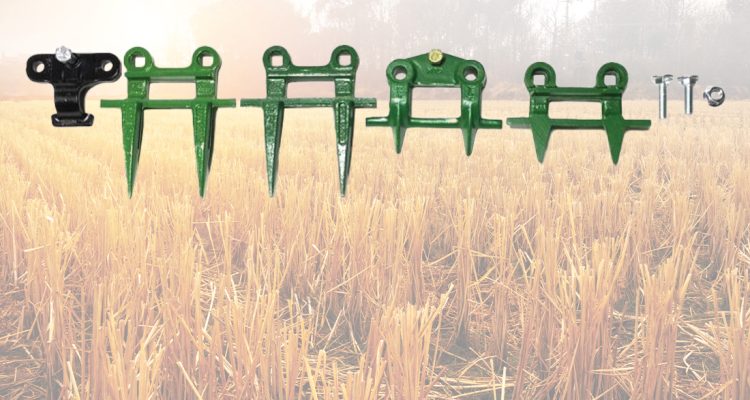Cutting equipment – such as sickles, knife heads, complete knife assemblies and guards, and mower attachments – serve a key purpose during the harvest season. Once upon a time, sickle mowers were pulled by horses, but in today’s agricultural industry tractors and combine harvesters allow for more lightweight and efficient attachment designs.
As part of its goal to offer a comprehensive catalogue of farming solutions, Motion Australia has paired with U.S. manufacturer Webb Cutting Components, who are leading innovators on the front of sickle sections, assemblies, and related high-wear components.
“This is our third year of working with Webb, and each year the demand increases, so we bring more product out,” says Russell Randal, National Accounts Manager for Agriculture at Motion Australia. “It’s getting an amazing response from the end users. They all express how impressed they are by the quality, whether it’s the complete knife assemblies, sickle, guards, or header fronts.”
Webb Cutting Components specialises in equipment used in harvesting hay, foraging, grain, and specialty crops. According to Owner and General Manager John Webb, working alongside Russell and the Motion Australia team has been a beneficial opportunity for both parties.
“Essentially, our cutting attachments are used close to or directly on the ground to slice plant material,” he adds. “The main thing we have to keep in mind when creating these parts is that they run in harsh environments and are often exposed to extreme shock or abrasive conditions.”
Catering to nearly every brand of agricultural equipment, John’s team of industry experts aim to construct parts that keep farmers working, increasing uptime so that their operations can expand and diversify.
“Our business is located in a rural area in Nebraska, so many of us have personal experience operating machines that use these types of parts,” he explains. “We use high quality materials that excel and outlast conventional components, because we know how frustrating and costly a breakdown can be when you’re a long way from the nearest town centre.”
Design traceability is a core value for the business, and they work closely with supply partners like Motion Australia to ensure quality control from the concept stage right through to prototyping and production. It’s this commitment to tailored service that has captured a local market, as well as the volume of various brand machines, says Russell.
“We have customers from areas of Western Australia right through to southern Queensland, New South Wales, Victoria, and South Australia ordering these parts every week. Originally, we were just bringing them into the Wagga Wagga branch because that’s where the program started. But now we’re stocking them in Toowoomba, Dubbo, Swan Hill, Shepparton, Wingfield and Regency Park in South Australia, and Welshpool in Western Australia, making sure that everyone in our network has stock on hand for their local customer base.”
He explains that the harvesting fronts are utilised for a range of different crops, from wheat and barley to other grains to oats. They are supplied directly to farmers, but a large number are purchased by contractors who use the equipment extensively for long periods of time.
“These contractors require something that’s going to be durable in Australia’s farming climate,” he says. “They start up north and work their way down, following the harvest. Because a lot of Webb’s equipment is heat treated, it has added resistance against all seasons, and is designed to last through numerous crop cycles. The general feedback has been that it is an incredibly worthwhile investment.”
Russell’s team began by importing after market parts most compatible with major machinery brands like John Deere, Macdon and Case Brand, but as the relationship strengthened and they broadened the range, customers began asking for specifics to suit their machinery.
“That’s a real testament to how well these parts are performing over multiple years,” Russell reflects. “It’s important to us that we forge these close relationships with trusted manufacturers around the world. It gives us greater flexibility when it comes to equipping our local industry with the best in stock, benefitting everybody in the long-term.”
Make sure your cutting equipment is ready for harvest this year
How to tell if your sickle is worn out and needs replacing
According to John, there are many ways to check for wear on a sickle. Start by looking at the edge of the section, checking to make sure that it is sharp. If you would not be afraid to run your finger over the cutting edge, chances are it is too dull to mow hay. Make sure that the section is straight, not bent, and that the bottom side shows no signs of wear. Secondly, check if the knife back is straight and showing no more than 1/16 inches of wear across the back edge. If your sickle fails any of these inspections, it’s time to stock up on replacements!




